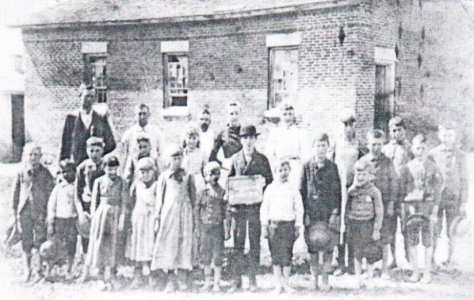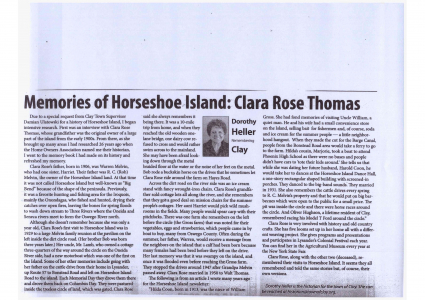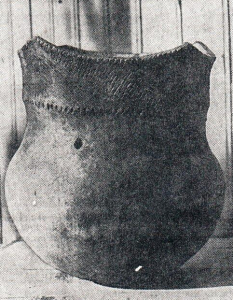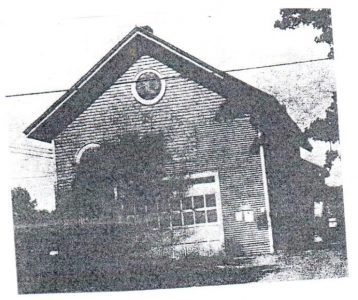Ethel Champion - The Pride of ClayPosted on June 10, 2021 |
Image
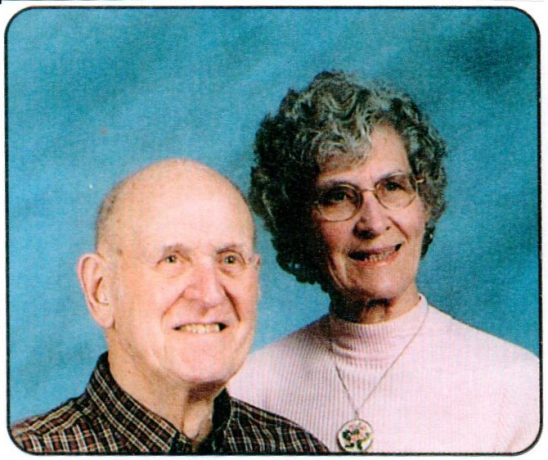
|
HISTORY MYSTERY: Ethel Champion - The Pride of Clay
In the photo, Ethel Champion is holding one of the over 500 hybrids of African violets she has created. My first contact with her was when I joined the church choir and heard her strong alto voice. This made it easy for me to learn that part! Eventually, as talk came around to her and her African violet “Hobby”, I was invited to her home to inspect them. Leaving church we turned east on Route 31 and then right on VanHoesen Road. Past farmland on both sides, there it was on the right, a beautiful old yellow 1812 farmstead, built by one of the Young family. A simple sign out front said “Champion’s African Violets.” Ethel and her husband Duane “Champ” Champion moved here in 1946. During the war she was with the WACS and Champ with the Army Air Corps. Afterward, he joined General Electric and Ethel was a teacher.
When their four children began to arrive, Ethel began her life as a stay-at-home mom. At some time she began her other profession as a hybridizer of African violets. She is a prize-winning creator of variegated
African violets. The moist basement held her display cases and served as her laboratory. Fluorescent lights helped the growing process and plant food lined the shelves for food. Duane called himself the chauffeur and gofer; they were a team. Ethel told the history of the violet. Originating in Africa, it is said that St. Paul brought the first plants to the European continent, hence the biological name Saint Paulias of the violet. In the 1930’s, the first plants arrived in the United States.
Ethel created new varieties of violets by breeding and crossbreeding existing plants. Crossbreeding African violets involves pollinating one type with another, growing the seed and then carefully raising the plants produced from that seed. She had been raising violets for 50 years in 2002 and her first plant “Superman” was 50 years old that year. Most are variegated violets meaning the leaves depart from the traditional dark green color and progress to lighter greens, pinks and tan tones. To recreate an existing plant, leaf cuttings may be used. She used seed propagation to produce an entirely different plant. She explained these processes to many school children. When Champ retired from General Electric he had more time to care for many of the outdoor plantings and said he didn’t miss punching a clock and that there was nothing more delightful than flower people. (Remember he was the one who raised the broom corn for the Clay Country Crafter’s homemade brooms!).
The growing of all these variegated violets has many variables. Ethel tried to keep the humidity high and the florescent lights on 24 hours a day. She said the plants came from cool hilly areas so variations in temperature are not fatal but she learned to adapt. Also, she used water and plant food to keep her plants healthy. Not only frequent changes of soil but creating her own soil for her environment made them able to tolerate the conditions. Each plant had a name and was carefully recorded on a card in the basement.
For her work with African violets, Ethel received the Horticultural Achievement Award, one of the highest honors given by the African Violet Society. She was president of the local African Violet Society and a past president of the national society. When Syracuse hosted the national African violet convention in 1982, Ethel was named grand champion of that convention. Her plants were shipped all over the country. They were so well-known that she has had visitors from Japan and Australia. Once when her plants had mealy bugs, she contacted Cornell Cooperative Extension for advice. Cornell said they couldn’t help her, so she did her own experimenting and discovered a barn spray that worked so well that she told Cornell about it!
In 2002. Ethel was 86 and Champ was 88 and both in good health. They gave credit to their love of nature, living on the farm, taking care of the violets and huge garden, good country diet and active participation in their church. Of course they are gone now but Ethel is still remembered as the Pride of Clay.
Dorothy Heller, Historian
6-10-21

